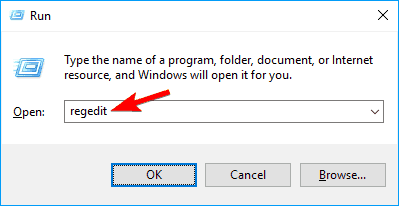The Windows Registry entries I found when I checked the relevant Windows Registry key are in this AskPartnerNetwork.reg file, which can be viewed with the Microsoft Notepad; if you download the file on a Windows system, don't double-click on it to open it or you will add the registry entries to the Windows registry. Nov 27, 2014 Opening the Windows Registry Editor Click on the Start button and select Run to open a text box (or simply press Win+R keys.) Type ‘regedit’ in the text box and press Enter or you can also click on OK 2. Open the Registry Editor by typing regedit into Start and then clicking regedit. Click File in the top-left corner. In the drop-down menu. Enter a name for your Registry backup. Check the 'All' box on the left side of the window.
- How To Open Computer Ports
- How To Open Computer Registrycleangoodsite Windows 10
- How To Open Computer Case
- How To Open Computer Registrycleangoodsite Dell

The Windows Registry is an enormous batch of files containing information about almost everything that occurs on the computer, from a visit to a Web site to a program installation. The registry also contains information about drivers and other essential programs, like DLLs -- small helper programs that often work with more than one application. This information is stored in the form of 'keys' that help programs run. It's like a big blueprint for where everything goes on your computer and how it all fits together. Only computers running Windows operating systems have registries, and despite rumors to the contrary, Windows 7 will have a registry.
A registry may have hundreds of thousands of entries, and new entries are created all the time. As it fills with information, the registry may cause a computer's performance to suffer. One problem is that Windows almost never removes registry entries, even if a program is uninstalled, as most uninstallers aren't able to effectively remove their own registry keys. And as files are moved around and programs are uninstalled, some registry keys point to programs or files that no longer exist or are located elsewhere.
Advertisement
How To Open Computer Ports
Advertisement
Fortunately, these errors don't have to be tolerated. The registry can be cleaned up, though not completely. And for your troubles, you may get better performance and decreased boot time. Some satisfied users report fewer instances of lag or Windows hanging (when the computer isn't responding). The exact performance boost varies depending on the state of the registry and the effectiveness of the cleaner program employed. You may also free up disk space, although most registry entries are very small.
Registry cleaning is not without risks. This is a very sensitive area of your computer, and if you're happy with how your computer is running, don't go digging around. Trying to manually edit your registry can create errors in the registry that make it impossible to load Windows. Some registry-cleaning programs have been known to delete important registry keys or essential DLL files. And the performance improvements may be negligible, while running the program and approving each recommended deletion could take hours. In addition, reliable data on how registry cleaners affect performance are almost impossible to find. Most 'performance tests' are actually produced by the developers of registry-cleaning tools.
Despite these concerns, it is possible to clean out some of the registry's gunk, and your computer may be better off for it. On the next page, we'll take a look at how to go about this delicate job.
Advertisement
Before you mess around with the registry, it's best to to create a backup copy of the registry and to also save any important data to an external hard drive or disk. Some registry-cleaning programs have a feature to back up a copy of your system's registry. If not, a simple Internet search should lead you to a free backup program.
Windows has a built-in program for editing the registry. It's creatively titled regedit.exe and can be accessed by going to the Start menu, clicking Run and typing in the program name. While this program is easy to access, it's difficult to use. Registry entries have long, oblique names that don't say much about what they represent. Even savvy computer users may have no idea what a particular entry points to. So unless you have specific instructions for how to alter or delete a clearly defined entry, it's best not to experiment with regedit.exe.
Advertisement
Advertisement
Third-party registry-cleaner programs are plentiful and remove a lot of the confusing grunt work of parsing and deleting registry entries. To find a program that suits you, check reviews on sites like ZDNet, CNET, PC World or PC Magazine. Some of these programs are free or only fix a few entries at a time, which can be quite laborious when a registry may have 2,000 broken entries. Others may cost $20 or more and may come as part of a package of system utilities.
It's not necessary to clean a registry more than once a month. Using a disk defrag program may provide additional performance boosts.
Before you run the program you've chosen, make sure you close all other open programs, as well as those running in the system tray, next to the clock in the bottom right corner of your screen. Follow directions closely: Most of these cleaner programs are intuitive, first scanning the registry for errors and then offering choices to fix broken entries, but you may miss an important step or warning if you click madly and try to speed through the process.
Some experts recommend against using programs that automatically delete registry errors [source: Bass]. Instead, it's better to approve deletions manually. The cleaner will likely offer a list of registry entries that it's safe to delete because they are certainly obsolete. It may also provide an option to 'repair' an entry. Going deeper and deleting borderline entries could affect a program's ability to function, such as by deleting a DLL that the cleaner doesn't realize is shared by more than one program -- or you may irreparably damage your installation of Windows. When in doubt, let the entry stay.
And that's about it. Hopefully you managed to clean up a few hundred entries without bricking your computer. If not, well, then you probably can't read this anymore and won't be interested in the links on the next page about registry cleaners and other related topics.
Advertisement
Related HowStuffWorks Articles
How To Open Computer Registrycleangoodsite Windows 10
Sources
- Bass, Steve. 'How to Clean Your Windows Registry and Speed Up Your PC.' PC World. Aug. 19, 2008. http://www.pcworld.com/printable/article/id,149951/printable.html
- Bott, Ed. 'Why I don't use registry cleaners.' Ed Bott's Windows Expertise. April 19, 2005. http://www.edbott.com/weblog/?p=643
- 'Degunking Your PC.' PC Magazine.http://www.pcmag.com/article2/0,1759,1625129,00.asp
- Oiaga, Marius. 'No More Registry from Vista SP1 and XP SP3 to Windows 7?' Softpedia. Jan. 16, 2008. http://news.softpedia.com/news/No-More-Registry-from-Vista-SP1-and-XP-SP3-to-Windows- 7-76470.shtml
- Sandip. 'Registry Hack to Enable Aero in Windows 7.' Jan. 13, 2009. http://www.blogsdna.com/1996/registry-hack-to-enable-aero-in-windows-7.htm
- Tittel, Ed. 'How to Clean the Windows Registry.' Information Week. March 28, 2005. http://www.informationweek.com/news/showArticle.jhtml?articleID=159907074
Fixing Windows errors, tweaking Windows features, or completely removing a program can sometimes require you to edit the Windows registry. This page provides help on how to open and view the Windows registry, edit, and delete registry values.
CautionBefore editing or changing anything in the Microsoft Windows registry, we recommend you back up the registry. For help with backing up the registry, see: How to back up and restore the Windows registry.
How to open the Windows registry
To open the Windows registry, follow the steps below for your version of Windows.
Note
If you have restricted access to the Windows computer you're logged in to, you may not be able to access the Windows registry.
Windows 10
- Type regedit in the Windows search box on the taskbar and press Enter.
- If prompted by User Account Control, click Yes to open the Registry Editor.
- The Windows Registry Editor window should open and look similar to the example shown below.
Windows 8
- Type regedit on the Start screen and select the regedit option in the search results.
- If prompted by User Account Control, click Yes to open the Registry Editor.
- The Windows Registry Editor window should open and look similar to the example shown below.
Windows 7 and earlier
How To Open Computer Case
- Click Start or press the Windows key.
- In the Start menu, either in the Run box or the Search box, type regedit and press Enter. In Windows 8, you can type regedit on the Start screen and select the regedit option in the search results. In Windows 10, type regedit in the Search box on the taskbar and press Enter.
- If prompted by User Account Control, click Yes to open the Registry Editor.
- The Windows Registry Editor window should open and look similar to the example shown below.
How to browse the Windows registry
When most users need to edit their registry, they're given the location or path of where the registry value is located and what to change. Below is an example path for a commonly accessed registry subkey. To browse to this location, you first start by opening the HKEY_LOCAL_MACHINE key (folder). In this key, you see the SOFTWARE folder, then Microsoft, Windows, CurrentVersion, and finally the Run folder.
TipEach backslash (') in a registry path represents another folder in the registry, with the name of that folder following the backslash.

After navigating to the registry path above, you'll see a window similar to the example below. In this example, you can see four different string value keys, which are pointing to the programs that run each time the computer is turned on or restarted.
How To Open Computer Registrycleangoodsite Dell
How to edit a Windows registry value
To edit a registry value, double-click the name of the value you want to edit. For example, if we double-clicked the 'IntelliPoint' value in the example above, a new window appears that would allow us to change the value of the data. In this case, we could change the file path of where the 'ipoint.exe' file is located for the IntelliPoint driver.
How to delete a Windows registry value
To delete a registry value, highlight any registry Name and then press the Del on the keyboard. For example, if we did not want the IntelliPoint program to load each time Windows starts, we could highlight IntelliPoint and then press the Del.
Windows registry shorthand and abbreviations
In some documentation and online forums, the registry values may be abbreviated. For example, instead of saying 'HKEY_LOCAL_MACHINE,' it is easier to say and write 'HKLM.' For a listing of registry terms and shorthand, see our registry definition.

Additional information
- See our registry definition for further information and related links.
